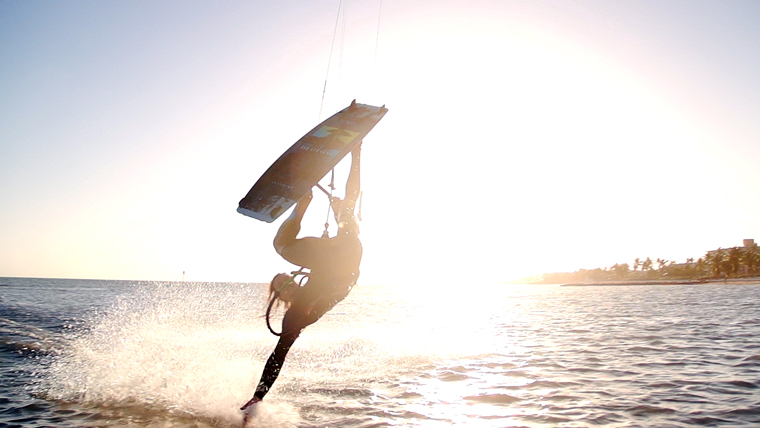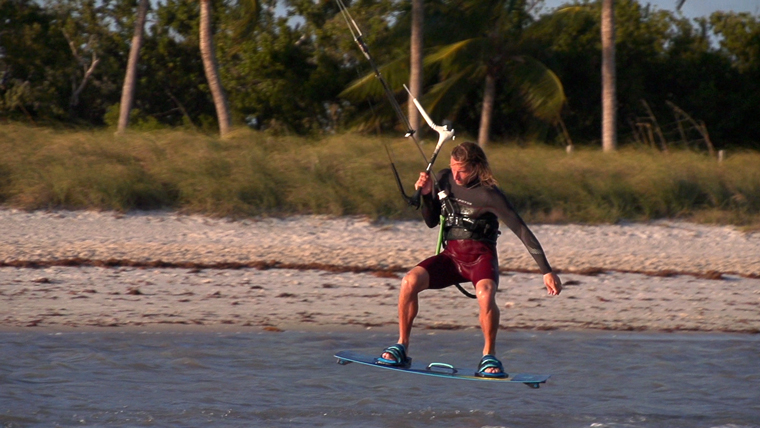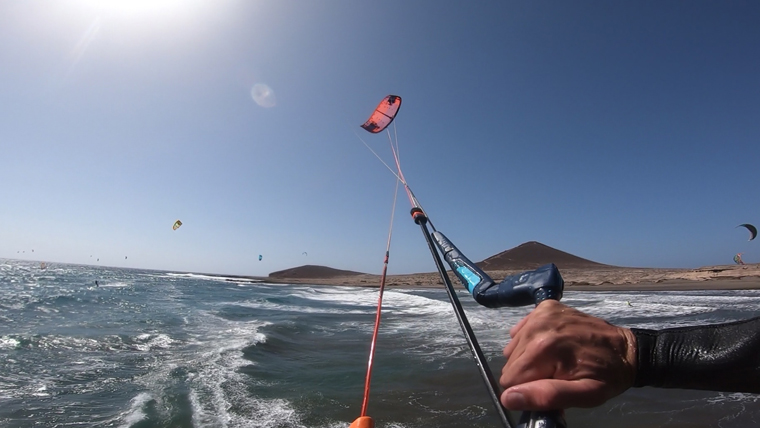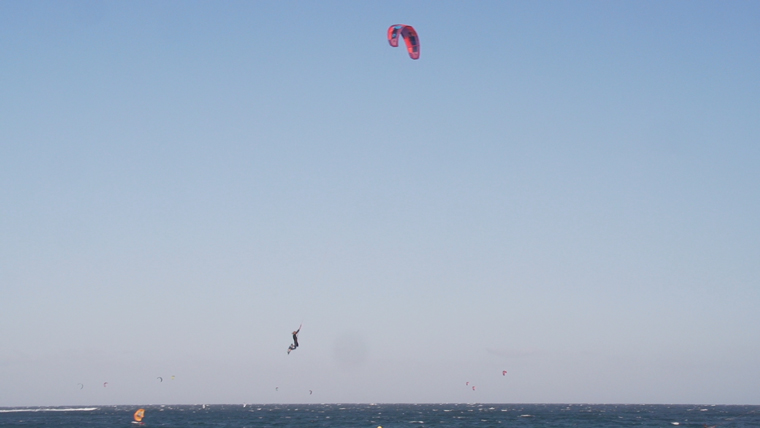Kiteboarding Trick tips for all levels. The ultimate kiteloop playlist
This is our first video in the ultimate kiteloop playlist. In this overview of our next season we'll show you the three kiteloops you need to know and 5 of our favorite kiteloop based tricks.


Part one: Understanding the loop
Before you attempt a trick, it’s important to understand what you are trying and to be able to visualize yourself doing it. A kiteloop is a full rotation of the kite in the wind window where it generates extra power and pulls you downwind. The extra speed and downwind pull makes the kite more powerful, so make sure always to point downwind and not hold an edge against the kite.
Think about which way the kite will travel depending on the direction you send it into a loop. You can send the kite into a loop and release it in different places throughout the wind window. For instance, if you continue holding the bar after the kite has made a complete loop, then it will continue into a second loop. Knowing when to release the loop is also a very important concept to understand.
Steering a kite is simply the lengthening and shortening of the two lines. The line that is shorter is the pivoting point of where the kite will loop. The harder you pull it and the longer you hold will determine the speed and direction of the loop. Pulling in on the bar will make the kite steer and pull harder, so once the kite makes a complete loop you can sheet out on the bar, making the kite launch into the air and catch you. If you keep the bar pulled in after the loop, the kite may stall and drop you into the water.
Controlling the kite
Practice your first kiteloops with a small kite in light winds, just enough to keep the kite flying. If you have a trainer kite then that’s an even better way to start. Widen your grip on the bar for extra leverage and faster steering of the kite. If you keep your hands close together, it will be harder to get the loop quickly around. A tighter loop will give less pull; a wider loop will generate more pull. In order to make the kite do a loop, you are going to have to pull in hard on one side of the bar and hold it until the kite makes a complete rotation.
Think of it as riding a bike: the harder you turn the handlebars, the tighter the turn. If you twist the handlebars like a steering wheel, then you will probably fall over and the bike won’t turn. So remember to pull hard on the bar and hold it until you have completed the entire loop.
Now that you understand what a kiteloop is and how to control it, it’s time to learn the different kinds of loops and how they apply. There are many ways to use a kiteloop, and not all require you to jump or be in the air. Don’t let the term “kiteloop” scare you out of giving it a try. Everyone has accidentally looped their kite before, so if you can understand how it works and use it to your advantage, then why not give it a try?
READ MORE HERE:
http://www.mackiteboarding.com/news/kiteloops-you-need-to-know-ride-with-blake-/
The Downloop
The simplest of all is a downloop. The reason this is the easiest is because it is not a full loop and can pull you into a water start or transition. If you pull a downloop too early, it won’t yank you like a regular kiteloop. Remember that downloops are front hand, and kiteloops are backhand. Looping the kite the same way you’re going on the way down is a downloop.
You can use downloops for water starts, transitions, or jumps, which is especially helpful in light winds. For water starts, rather than sending the kite from the zenith, you can pull it into a downloop which maximizes the wind window and gives you a much greater pull out of the water. For a transition, you simply put the kite high, pull hard on your front hand, let off your edge, follow the kite, and sheet out when the kite is traveling the other direction. Downloops are best used for transitional jumps and turns.
If you can already ride upwind and jump, this is where you'll want to start. Downloop transitions are the perfect way to get used to looping. We recommend doing them right after landing a jump or even halfway through a rotation. This will get get you acclimated to doing your first kiteloop-based tricks. Stand by; we have a couple videos planed to help you progress into these. Kiteloops can be intense.

Kiteloops
The biggest difference with a kiteloop is that it is pulled with the backhand and loops in the direction you’re going. Once you learn the kiteloop it will change the way you kiteboard forever.
The easiest way to try a kiteloop for the first time is either on a trainer kite or an underpowered body drag. Walk or body drag in the direction where your strong hand is the back hand. Quickly send the kite, slightly sheeted out, pull in hard on your back hand when the kite reaches the zenith, hold it all the way through 'til it makes a complete rotation, then sheet out.
This will pull you hard downwind, so make sure to be ready to follow the pull of the kite; never hold an edge against a loop. Once you get comfortable and understand how it works, try a kiteloop with a waterstart and make sure to follow the pull of the kite as it takes you, and point your board downwind. Next is the jumping kiteloop, and before you know it you’ll be doing backroll kiteloops! The earlier you start your kiteloop, the more power that is available to you.

Heli loops
Heli loops are used as a tool for soft and smooth landings after a jump. Different than a kiteloop because they have no power, heli loops are pulled after you reach the peak of your jump, and as you are descending it catches you. A heli loop is a vertical loop rather than a directional loop. It pulls you up, and if timed properly can lift you back up into the air, hence the name “heli” loop.
The key difference to remember between a kiteloop, which gives you a strong pull, and a heli loop, which doesn't give you any power, is that a strong kiteloop is pulled before you reach the top of your jump.
READ MORE HERE:
http://www.mackiteboarding.com/news/kiteloops-you-need-to-know-ride-with-blake-/
//////

No comments:
Post a Comment